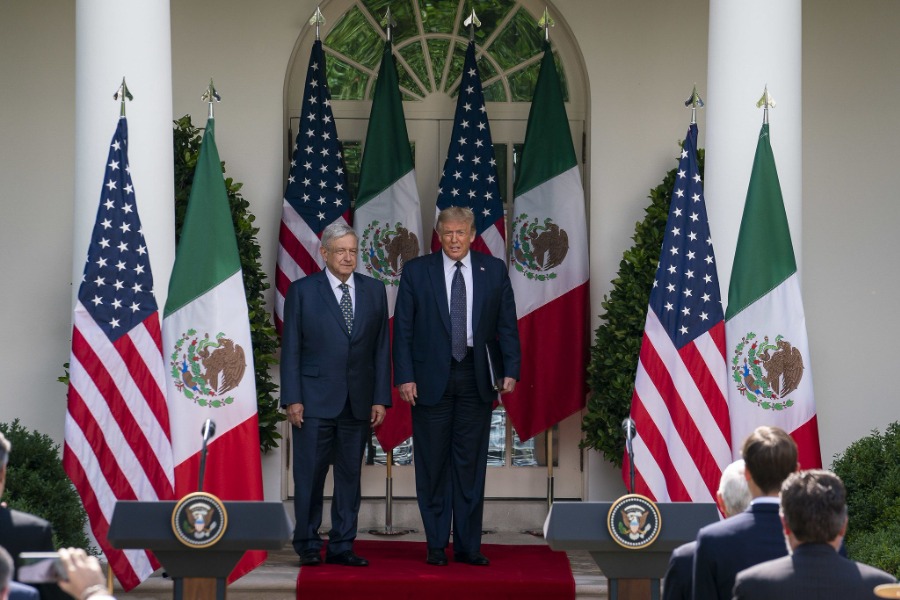Now that Gina Haspel is CIA Director, It’s Time to Come to Terms With the Torture Program
On Thursday, the Senate voted to make Gina Haspel the next director of the CIA. I don’t know Haspel myself, but I have no reason to doubt that she is someone with a deep-rooted patriotism and a sense of duty to the officers who work under her. By all accounts, she appears to be a highly effective administrator. Her long career in the CIA makes her well suited to understand the agency and its operations, and having served as acting director, she already knows how to run the CIA day-to-day.
Published by The Lawfare Institute
in Cooperation With

On Thursday, the Senate voted to make Gina Haspel the next director of the CIA. I don’t know Haspel myself, but I have no reason to doubt that she is someone with a deep-rooted patriotism and a sense of duty to the officers who work under her. By all accounts, she appears to be a highly effective administrator. Her long career in the CIA makes her well suited to understand the agency and its operations, and having served as acting director, she already knows how to run the CIA day-to-day.
Unfortunately, Haspel’s confirmation process over the last several weeks has reignited one of the ugliest debates in America: namely, whether the CIA’s program to capture and “interrogate” al-Qaeda leaders responsible for 9/11 with cruel and unusual methods—which the CIA termed “enhanced interrogation techniques,” and which other people call “torture”—was wise, effective, or moral.
More disappointingly, some people—most notably the president himself—have openly mused about engaging in torture for its own sake. The president’s tweet that Haspel is “under fire for being too tough on terrorists” was, in effect, an argument that Haspel is suitable for the directorship because of rather than despite her involvement in the program. Donald Trump does not even attempt to hide his support for torture behind euphemisms or obfuscate it behind arguments about effectiveness or necessity; he openly supports “torture” because it is “tough.”
But to the extent that Trump has reignited the debate around torture through Haspel’s nomination, her failure to properly explain to the public how seriously the CIA damaged itself and American security interests through the use of torture—or how dire the consequences of once again engaging in torture could be—is a serious omission, one which I hope she will address as director.
I’ve spent a lot of time coming to grips with the fact that this program ever took place. I’ve worked for much of my adult life in and around U.K. and U.S. intelligence. I broadly support them using their authorities boldly and aggressively, and I think that the world is a better and safer place as a result. If I err, it is certainly towards vocal and public support of the U.S. intelligence community in public and in private, even when doing so is unpopular and the weight of public opinion is against me. My own work in national security operations has shown me that there really are evils in this world, and when I evaluate the work of the intelligence community, I do so with an awareness of the horrors that balance against the sometimes unpalatable choices these agencies must make.
So I have always been deeply shaken that CIA took part in a program that—to me—appears so violently at odds with American values and security needs. My response has been to spend countless days and weeks poring through documents relating to this program to try to understand how it was that America came to design and execute it.
When I began reading the documents relating to the rendition, detention and interrogation (RDI) program, I desperately wanted to find an agency unaware that it was engaged in torture. I hoped that perhaps the authors of it had accidentally veered over some fuzzy line or that the objections to the program came just from squeamishness or a desire to impugn the agency’s motives. But the picture that emerges from thousands of pages of since-declassified CIA emails and documents is one of a program that was always recognized as torture; which was authorized as a policy in response to 9/11 rather than in response to a specific intelligence need; and which was conducted unsafely, with a lack of discipline and with a reckless disregard for foreseeable consequences from the very start.
Most histories of the RDI program begin with the story of the first person to go through it: Abu Zubaydah, whom the CIA claimed was a close aide of Bin Laden and a key player in the East Africa embassy bombings in 1998 that left 200 people dead. Zubaydah was captured in March 2002. By all accounts he was arrogant and uncooperative in his answering of CIA questions, and this ultimately led CIA to use the waterboard on him.
But this is not where the RDI program began. The program’s genesis is at least four months before Zubaydah was first captured, as a document prepared in late November 2001 shows. It is marked with the address of the White House and does not bother with euphemisms like “enhanced interrogation techniques.” The document that requests that “a policy decision [be] made with regard to U.S. use of torture” and discusses how the government will side-step the statutory prohibition against it in the event that it decides to go ahead. In other words, the government began considering the authorization of torture prospectively, well before it encountered a situation in which CIA officers felt such techniques actually needed to be used to gather intelligence.
Testifying before the Senate intelligence committee, Haspel asserted that CIA acted within U.S. law when it conducted this program. Her portrayal of the agency as a law-abiding entity is generally true; legal constraints do act as real and meaningful obstacles to action within the U.S. intelligence community.
But this program was different. And it is important to appreciate what CIA means when it asserts it acted “within the law” in conducting this program. For example, in one email, the general counsel of CIA’s Counterterrorism Center sought a formal declination of prosecution for violations of the Torture Act in advance from the attorney general. The reason was because the methods CIA wanted to use on Abu Zubaydah “appear to be prohibited under the provisions of 18 U.S.C 2340-2340B.” Seeking a formal prospective “declination to prosecute” from the attorney general for actions CIA intends to commit, which would ordinarily be prohibited by the Torture Act, is not what most people would understand “acting within the law” to mean.
Even after the program started, arguments that it was always grounded in necessity are betrayed by CIA’s own cables. Take for example a cable sent in January 2003, in which a CIA officer complains of being asked to interrogate a detainee after concluding the detainee was “mainly truthful and not withholding significant information,” and argues that the detainee “will come to the conclusion that whether he cooperates or not, he will be continually subjected to enhanced techniques.”
The RDI program was run in a way that was undisciplined, leading to several incidents in which officers acted even beyond what CIA had officially sanctioned. When a CIA officer used a live drill next to the head of a blindfolded detainee, this was not merely horrifying—it was unauthorized. The decision to use the drill was not cleared with the CIA’s headquarters, CIA medics or CIA lawyers.
At another point, an unloaded gun was used as prop to frighten a detainee. The use of this prop was not only unauthorized, but the person wielding it was not a trained interrogator and had not been authorized to use enhanced interrogation techniques. In yet another example, a CIA officer went beyond what was authorized in threaten a detainee by telling him that his female relatives would be “brought in here” and sexually assaulted in front of him.
And the program was conducted in way that was actively unsafe. The waterboarding of detainees sometimes exceeded the maximum safe-time approved by CIA medics—once, by as much as double the recommended time.
In one case, this had fatal consequences. Gul Rahman, a detainee held by CIA in a cold room to force him to reveal information, died of hypothermia. At his death, he was naked from the waist down and was shackled in a position that prevented him from moving around to keep warm.
CIA’s actions even after the program ended are also worthy of serious concern. Consider the destruction of video tapes of Abu Zubaydah’s torture. This multi-year saga is detailed in former CIA General Counsel John Rizzo’s book “Company Man,” and the recently declassified disciplinary review into Jose Rodriguez by former CIA deputy director Mike Morell. According to Rizzo, the White House found out about the existence of these tapes during the aftermath of the Abu Ghraib abuse pictures coming to light. The White House issued an explicit direction to CIA that the tapes not be destroyed, on the basis that their destruction them would invite political fallout. Director of National Intelligence John Negroponte also directed that the tapes not be destroyed in mid-2005. Despite these direct instructions, Jose Rodriguez, the head of CIA’s Clandestine Service, ordered the destruction of the tapes shortly after the Washington Post published a piece revealing the existence of CIA black sites.
We should be clear: Whatever the wisdom of Rodriguez’s actions, this is a wild disregard for agency procedure and egregious misconduct by one of CIA’s most senior officers. There is good reason why it was the subject of an internal disciplinary review and Justice Department investigation. This was one of the major points of contention in Haspel’s confirmation hearing: She was chief of staff to Rodriguez at the time and drafted the cable ordering the destruction of these tapes, although both CIA and Justice Department reviews cleared Haspel of wrongdoing.
Finally, the RDI program was reckless in ways that the officials who designed it may never really have understood, and for which they have never been held accountable. It is perhaps hard to fully convey how much of a threat the legacy of torture still poses to the United State’s ability to interact with its allies overseas and to its ongoing counterterrorism efforts.
The risks and subsequent fallout from this recklessness is vast. When the U.K.’s domestic security service, MI5, found out that the U.K. foreign intelligence service, MI6, had been involved in the rendition—but not torture—of suspects who had later endured torture, MI5 threw all MI6 officers out of its headquarters. This caused a prolonged rift between two of the main intelligence agencies of one of the United States’ closest allies—agencies that are themselves responsible for no small amount of intelligence that reaches the president in his daily brief.
Similarly, some extremely bad people are walking free with large payouts because the evidence against them was contaminated by torture. The program has directly led to considerable litigation in the U.K., Canada, U.S. and elsewhere. It has put top-secret documents at risk of discovery through litigation. It has caused a sustained foreign policy firestorm for the United States and its allies with enormous costs.
Defenses of this program ignore or undervalue these costs, or pretend they are not directly attributable to it. And even putting values aside, advocates of starting a new torture program as a matter of “toughness” ignore that the price of doing so will not be measured in a few hurt feelings.
Other intelligence agencies have eventually come to terms with their failings of the past, if painfully. FBI director James Comey used to talk about how he kept J. Edgar Hoover’s order to surveil Martin Luther King, Jr. on his desk. In his book, he writes that he directed new FBI recruits visit the memorial to King in Washington, D.C. and read King’s “Letter from Birmingham Jail” as part of their training. He did so to remind himself and his agency that they once abused their position of trust in support of policies now broadly understood to be unacceptable and un-American, and that they must be careful to make sure it did not happen again.
It is a good lesson to learn. Perhaps Director Haspel should keep a copy of the RDI authorization on her desk to serve as a reminder.
Correction: This piece previously described Abu Zubaydah as "a close aide of Bin Laden." It has been edited to reflect that this description of Zubaydah's role was an assessment made by the CIA at the time. According to the 2014 Senate intelligence committee report (see page 410), the 2002 OLC memorandum authorizing enhanced interrogation techniques against Zubaydah relied on CIA's representation that Zubaydah was the "third or fourth man" in al-Qaeda. This CIA assessment was based on single-source reporting, which CIA later retracted. CIA eventually concluded that Zubaydah was not a member of al-Qaeda. Additionally, according to U.S. government court filings in Abu Zubaydah's 2008 habeas case, the U.S. government is not relying on—and has not provided evidence to Zubaydah's legal defense to support—the claim that Zubaydah was involved in planning or executing the 1998 embassy bombings in Nairobi, Kenya, and Dar-es-Salaam, Tanzania, or the attacks of September 11, 2001 (See Husayn v. Gates, Civil Action No. 08-cv-1360, Doc. No. 406).





